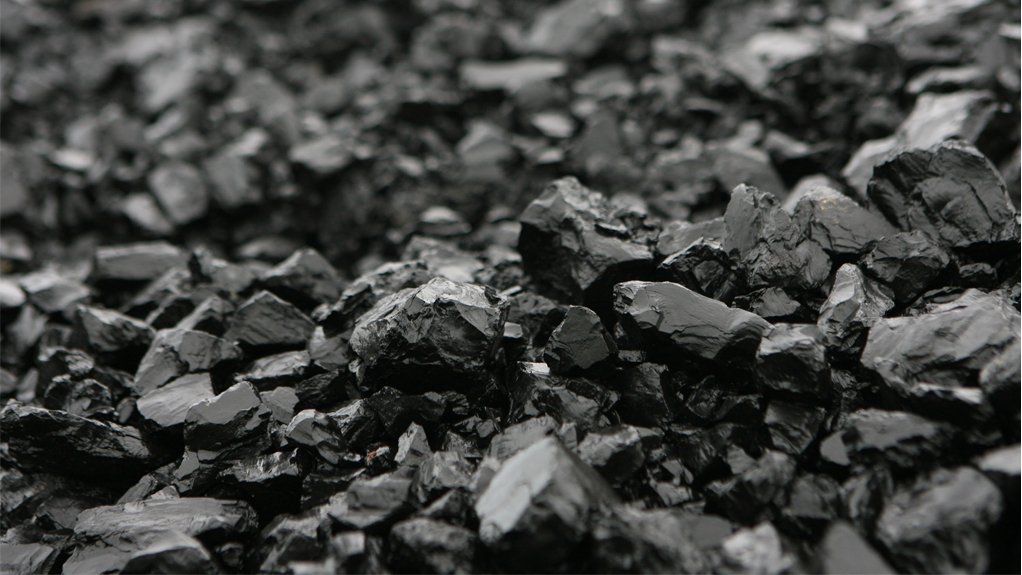Colorado’s coal mining industry in dire straits as EPA rules tighten noose
DENVER, Colorado (miningweekly.com) – Colorado has been blessed with a bounty of minerals that has historically played a critical role in ensuring the state’s economic success; however, new legislative measures has cast doubt over the future stability of the region’s coal mining industry.
Increasingly strict legislation aimed at reducing the US’s reliance on coal-fired electricity was making residents nervous about impending rising electricity rates, as cheaper coal-fired power plants are forced to shut down in favour of more expensive sources of energy, while removing a critical prop that underpinned local economies.
COAL IN DISTRESS
In June, the US Environmental Protection Agency (EPA) introduced its toughest action yet to cut down on carbon emissions, ordering a 30% reduction in carbon dioxide emissions from power plants from 2005 levels by 2030, which did not augur well for struggling North American thermal coal producers, which had earlier this year expressed some optimism for recovering prices.
Under the direction of US President Barack Obama, the Clean Power Bill would be implemented through a state-federal partnership, under which states would identify a path forward using either current or new electricity production and pollution control policies to meet the programme’s proposed goals.
Power plants accounted for roughly one-third of all domestic greenhouse-gas (GHG) emissions in the US. While there were limits in place for the level of arsenic, mercury, sulphur dioxide, nitrogen oxides and particle pollution that power plants could emit, there were currently no national limits on carbon pollution levels.
“This spelled a lot of negativity for Colorado’s nine coal mines,” Colorado Mining Association (CMA) president Stuart Sanderson told Mining Weekly Online on the sidelines of the Denver Gold Forum.
He said states such as Colorado would be hardest hit by the new rules, owing to its reliance on coal for about 64% of its electricity.
Sanderson noted that previous EPA regulations had already shuttered 20% of the nation's coal plant capacity, pushing the reliability of the power grid close to the edge.
Indeed, North American coal miners are dealing with weak prices amid low demand for thermal electricity-making coal and metallurgical steelmaking coal as competition from the emerging shale gas industry impacts on markets.
Last month, US coal producer Alpha Natural Resources said eight of its affiliates had given about 1 100 employees, working at 11 West Virginia surface mines, notice that they would be laid off in three months. Alpha joined other coal miners such as Consol Energy and Walter Energy that had, in recent months, either given notice to idle mines, or had shuttered operations, as they battled the stubbornly low coal prices.
Two significant Canadian development projects had also been placed on the back burner as a result of the low prices. Teck Resources had deferred restarting the Quintette coal mine, in north-east British Columbia, which had the potential to produce between three-million and four-million tonnes of steelmaking coal a year, until market conditions improved.
Sanderson explained that Colorado – due to its dependence on clean, high-quality coal – had enjoyed electricity rates below the national average, but that these were increasing substantially owing to the rules mandating higher-cost energy sources like renewables and natural gas.
“These policies are causing significant harm to rural undiversified communities and businesses reliant on Colorado's coal industry, which accounts for nearly 24 000 jobs in the state,” he said.
Ironically, Sanderson noted, US carbon emissions had declined 21% since 2005, and emissions of criteria pollutants such as sulphur dioxide had fallen by more than 87% since the 1970s. Overall emissions of carbon from US power plants now accounted for only 4% of the world total of anthropogenic (human caused) sources. Yet conversely, emissions from power plants in China had increased by 170%, and those from India were up 90%, erasing any gains that would be produced by the costly EPA rules.
“The world is turning to coal and to economic prosperity,” Sanderson said. “Coal is the fastest-growing source of electricity worldwide and will lift nations out of energy poverty. Thus, it makes no sense for the US to weaken its economy on policies that will produce nothing in the way of corresponding benefits to the environment,” he affirmed.
The EPA’s proposal could also cause the loss of up to 9 000 jobs in Colorado and the West, including those at the mines, which paid wages and benefits in excess of $116 000/y. Falling coal output on federal lands could also lower the royalty payments that supported public schools throughout the state by way of hundreds of millions of dollars.
But Sanderson said the low-income and fixed-income households would be most vulnerable to the EPA's energy policies. “They have little, if any, discretionary income to pay for air conditioning and heat, and will be forced to make tough choices about their families' most basic needs,” he said.
He noted, however, that all was not “doom and gloom”, saying that more of the state’s high-quality coal was finding its way to the export market.
Professional services firm EY, in 2011, said Colorado ranked eleventh in the US in terms of total coal output, producing 25.9-million short tons of coal and employing 3 753 workers in coal mining operations. Of that coal output, 12%, or three-million short tons, was exported abroad and accounted for 430 (11%) of the total 3 753 coal mining jobs.
According to the US Energy Information Administration, Colorado held 300-million tons of recoverable coal at producing mines in 2012, representing about 1.6% of the country's total recoverable reserves.
DIVERSIFIED RESOURCES
Unlike most US states, Colorado produces or has produced diversified minerals, including coal, gold, gypsum, limestone, molybdenum, sodium bicarbonate and uranium and even some diamonds, Sanderson said.
According to him, Colorado ranked first in the US for molybdenum production, with Freeport-McMoRan subsidiary Climax Molybdenum’s Henderson mine, in Empire, being the world’s largest primary producer of the metal that is used to make alloy wheels, automotive parts and lubricants.
The state was also the fourth-largest US gold producer, with AngloGold Ashanti's Cripple Creek & Victor Gold Mining Company operating the state’s largest gold mine, producing more than 200 000 oz/y of the yellow metal.
Colorado was also a top-15 coal producer in the US and the state’s clean, high-quality coal helped utilities meet increasingly strict air-quality standards. Sanderson also stressed that the state’s coal producers paid tens of millions of dollars each year in federal coal royalties, half of which were used to fund public schools.
“Colorado’s mining industry generates about $7-billion annually toward Colorado’s gross domestic product. The state is one of the top regions for mineral royalty disbursements, and mineral severance taxes support local governments and important state programmes such as geologic hazard detection, and avalanche prediction and prevention,” he said, noting that the mining industry employed nearly 18 000 people directly and accounted for more than 57 000 jobs overall.
Employees in the mining industry were some of the highest paid industrial workers in the state and, in most cases, the mining companies were the largest employers in the communities in which they operate.
Sanderson noted that modern mining activity affected less than 1% of the land surface in Colorado, and mining companies spent millions of dollars each year to reclaim lands and protect the environment.
Comments
Press Office
Announcements
What's On
Subscribe to improve your user experience...
Option 1 (equivalent of R125 a month):
Receive a weekly copy of Creamer Media's Engineering News & Mining Weekly magazine
(print copy for those in South Africa and e-magazine for those outside of South Africa)
Receive daily email newsletters
Access to full search results
Access archive of magazine back copies
Access to Projects in Progress
Access to ONE Research Report of your choice in PDF format
Option 2 (equivalent of R375 a month):
All benefits from Option 1
PLUS
Access to Creamer Media's Research Channel Africa for ALL Research Reports, in PDF format, on various industrial and mining sectors
including Electricity; Water; Energy Transition; Hydrogen; Roads, Rail and Ports; Coal; Gold; Platinum; Battery Metals; etc.
Already a subscriber?
Forgotten your password?
Receive weekly copy of Creamer Media's Engineering News & Mining Weekly magazine (print copy for those in South Africa and e-magazine for those outside of South Africa)
➕
Recieve daily email newsletters
➕
Access to full search results
➕
Access archive of magazine back copies
➕
Access to Projects in Progress
➕
Access to ONE Research Report of your choice in PDF format
RESEARCH CHANNEL AFRICA
R4500 (equivalent of R375 a month)
SUBSCRIBEAll benefits from Option 1
➕
Access to Creamer Media's Research Channel Africa for ALL Research Reports on various industrial and mining sectors, in PDF format, including on:
Electricity
➕
Water
➕
Energy Transition
➕
Hydrogen
➕
Roads, Rail and Ports
➕
Coal
➕
Gold
➕
Platinum
➕
Battery Metals
➕
etc.
Receive all benefits from Option 1 or Option 2 delivered to numerous people at your company
➕
Multiple User names and Passwords for simultaneous log-ins
➕
Intranet integration access to all in your organisation





















